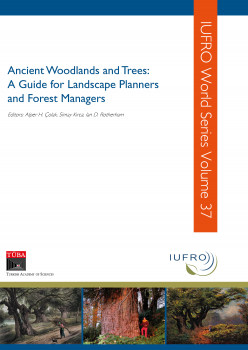The wood-pasture; for food, wood and biodiversity

The wood-pasture; for food, wood and biodiversity
This chapter is about the wood-pasture. It is based on research in Western and Central Europe (Vera, 2000; 2007; 2013). The wood-pasture is a park-like landscape, consisting of a mosaic of grasslands, bushes, thickets, solitary trees and groves (Flower, 1977; Pott and Hüppe, 1991; Rackham, 1980; 2003; Vera, 2000). It has an enormous variation in types of vegetation and an enormous variation in combination of these (Photograph 1). Because of that the wood pasture is very rich in wild plant and animal species (Alexander, 1998, 2001 and 2005; Alexander et al., 2006; Appelqvist et al., 2001; Bossuyt et al., 2005; Green, 2009; Harding and Rose, 1986; Manning et al., 2006; Ranius et al., 2005; 2008; Schuffenhauer, 2011; Schulze-Hagen, 2004; Ek and Johanesson, 2005; Vera, 2000; Vodka et al., 2009). Being an agricultural system of pasturing livestock, the woodpasture in Western and Central Europe goes back to the beginning of history and back to the introduction of agriculture between 7,000 and 5,550 years BP (Bogucky, 1988). It once covered large parts of the European continent (Pott and Hüppe, 1991; Rackham, 1980; 2003; Vera, 2000). It is the result of the wilderness taken into use by mankind in order to provide what was needed to fulfil the needs of its household, which consisted of grazing livestock, collecting of hay and honey, extraction of firewood and timber, and hunting of wild animals. This section describes how the wood-pasture as system works, how it provided mankind his living and how it is related to the originally present wilderness.
